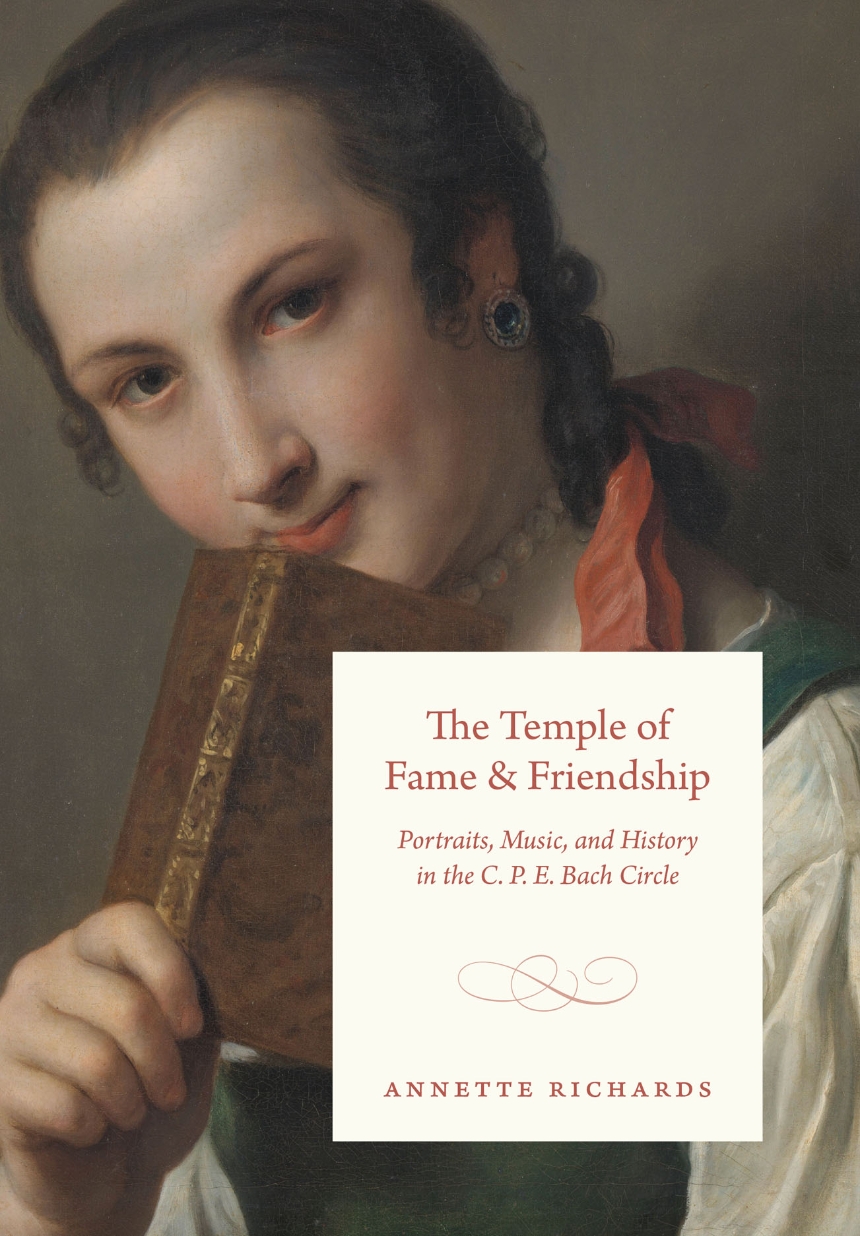The Temple of Fame and Friendship
Portraits, Music, and History in the C. P. E. Bach Circle
9780226806266
9780226816777
The Temple of Fame and Friendship
Portraits, Music, and History in the C. P. E. Bach Circle
This book examines the renowned portrait collection assembled by C. P. E. Bach, J. S. Bach’s second son.
One of the most celebrated German composers of the eighteenth century, C. P. E. Bach spent decades assembling an extensive portrait collection of some four hundred music-related items—from oil paintings to engraved prints. The collection was dispersed after Bach’s death in 1788, but with Annette Richards’s painstaking reconstruction, the portraits once again present a vivid panorama of music history and culture, reanimating the sensibility and humor of Bach’s time. Far more than a mere multitude of faces, Richards argues, the collection was a major part of the composer’s work that sought to establish music as an object of aesthetic, philosophical, and historical study.
The Temple of Fame and Friendship brings C. P. E. Bach’s collection to life, giving readers a sense of what it was like for visitors to tour the portrait gallery and experience music in rooms thick with the faces of friends, colleagues, and forebears. She uses the collection to analyze the “portraitive” aspect of Bach’s music, engaging with the influential theories of Swiss physiognomist Johann Caspar Lavater. She also explores the collection as a mode of cultivating and preserving friendship, connecting this to the culture of remembrance that resonates in Bach’s domestic music. Richards shows how the new music historiography of the late eighteenth century, rich in anecdote, memoir, and verbal portrait, was deeply indebted to portrait collecting and its negotiation between presence and detachment, fact and feeling.
One of the most celebrated German composers of the eighteenth century, C. P. E. Bach spent decades assembling an extensive portrait collection of some four hundred music-related items—from oil paintings to engraved prints. The collection was dispersed after Bach’s death in 1788, but with Annette Richards’s painstaking reconstruction, the portraits once again present a vivid panorama of music history and culture, reanimating the sensibility and humor of Bach’s time. Far more than a mere multitude of faces, Richards argues, the collection was a major part of the composer’s work that sought to establish music as an object of aesthetic, philosophical, and historical study.
The Temple of Fame and Friendship brings C. P. E. Bach’s collection to life, giving readers a sense of what it was like for visitors to tour the portrait gallery and experience music in rooms thick with the faces of friends, colleagues, and forebears. She uses the collection to analyze the “portraitive” aspect of Bach’s music, engaging with the influential theories of Swiss physiognomist Johann Caspar Lavater. She also explores the collection as a mode of cultivating and preserving friendship, connecting this to the culture of remembrance that resonates in Bach’s domestic music. Richards shows how the new music historiography of the late eighteenth century, rich in anecdote, memoir, and verbal portrait, was deeply indebted to portrait collecting and its negotiation between presence and detachment, fact and feeling.
336 pages | 8 color plates, 108 halftones, 27 line drawings | 7 x 10 | © 2020
Art: European Art
Music: General Music
Reviews
Table of Contents
Introduction
Chapter 1 Exhibiting: The Bach Gallery and the Art of Self-Fashioning
Chapter 2 Collecting: C. P. E. Bach and Portrait Mania
Chapter 3 Speculation: Likeness, Resemblance, and Error
Chapter 4 Character: Faces, Physiognomy, and Time
Chapter 5 Friendship: Portrait Drawings and the Trace of Modern Life
Chapter 6 Feeling: Objects of Sensibility and the “Portrait of Myself”
Chapter 7 Memorializing: Portraits and the Invention of Music History
Acknowledgments
Notes
Bibliography
Index
Chapter 1 Exhibiting: The Bach Gallery and the Art of Self-Fashioning
Chapter 2 Collecting: C. P. E. Bach and Portrait Mania
Chapter 3 Speculation: Likeness, Resemblance, and Error
Chapter 4 Character: Faces, Physiognomy, and Time
Chapter 5 Friendship: Portrait Drawings and the Trace of Modern Life
Chapter 6 Feeling: Objects of Sensibility and the “Portrait of Myself”
Chapter 7 Memorializing: Portraits and the Invention of Music History
Acknowledgments
Notes
Bibliography
Index
